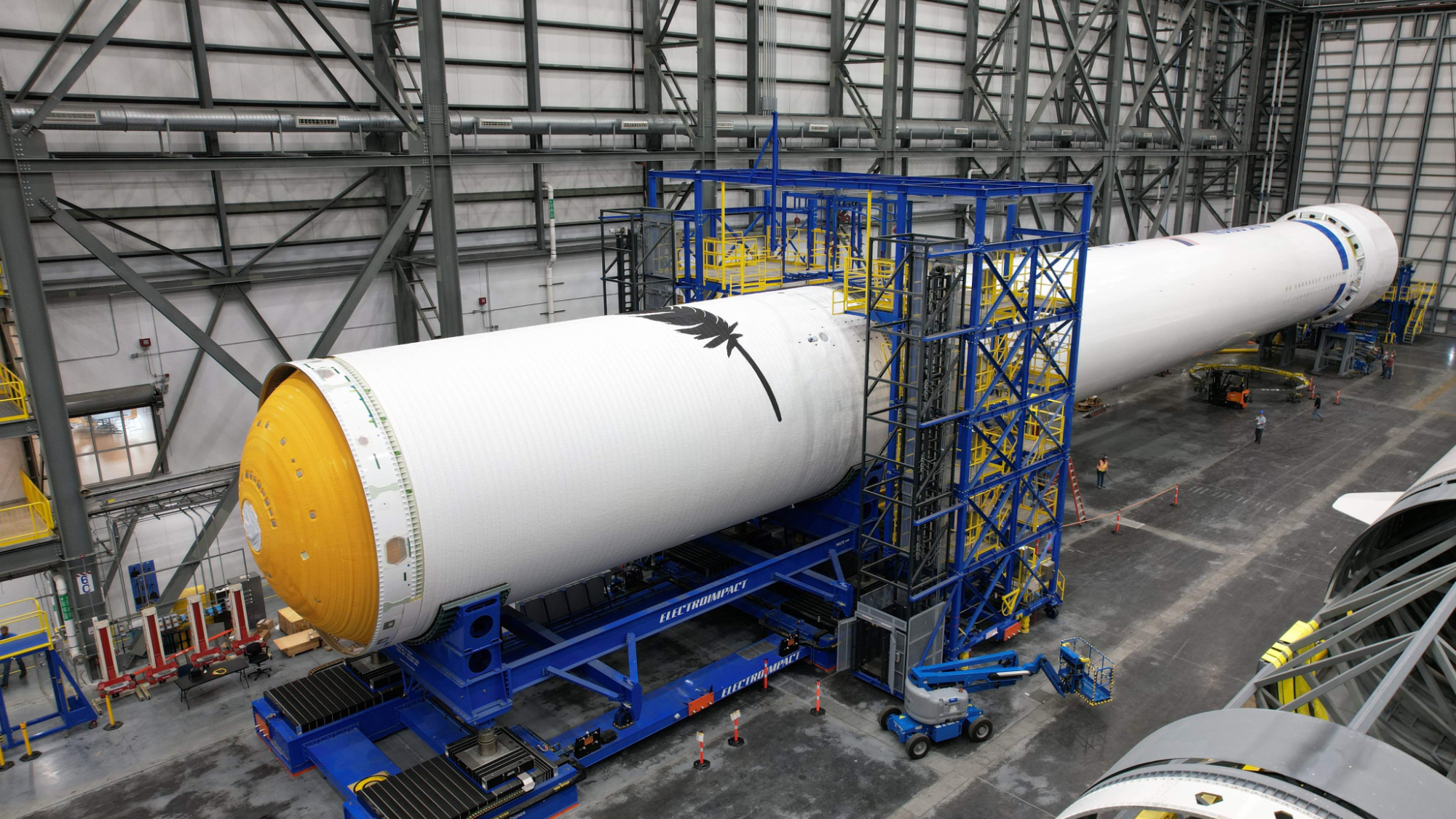
Blue Origin's powerful new rocket is starting to come together.
The company, which was founded by Amazon's Jeff Bezos, announced on Monday (Jan. 21) that it has mated the two stages of its New Glenn heavy lifter for the first time.
The milestone, which occurred at Launch Complex 36 (LC-36) at Cape Canaveral Space Force Station in Florida, will enable Blue Origin "to exercise our tooling and stage interfaces in preparation for our first launch later this year," the company wrote on Monday in a post on X that shared a photo of the joined stages.
Related: Facts about Blue Origin, Jeff Bezos' spaceflight company

The first stage involved in the linkup made the trip to LC-36 from Blue Origin's factory on Florida's Space Coast about two weeks ago, as the company explained in a previous X post.
The two-stage New Glenn will stand 322 feet (98 meters) tall and be able to haul 50 tons (45 metric tons) to low Earth orbit. That's about twice the payload capacity of SpaceX's workhorse Falcon 9 rocket.
Like the Falcon 9, New Glenn's first stage is designed to be reusable. The booster will be powered by seven of Blue Origin's BE-4 engines, which flew for the first time earlier this month on the debut flight of United Launch Alliance's new Vulcan Centaur rocket.
Get the Space.com Newsletter
Breaking space news, the latest updates on rocket launches, skywatching events and more!
That launch went well, by the way, though the payload — Astrobotic's Peregrine moon lander — suffered problems of its own in deep space and ended up crashing back to Earth.
New Glenn has been in development for more than a decade. The heavy lifter's debut was originally targeted for 2020, but it has been pushed back multiple times.
The eventual first flight will loft NASA's two-spacecraft EscaPADE (Escape and Plasma Acceleration and Dynamics Explorers) Mars mission. Liftoff is currently scheduled for this coming August.
Join our Space Forums to keep talking space on the latest missions, night sky and more! And if you have a news tip, correction or comment, let us know at: community@space.com.

Michael Wall is a Senior Space Writer with Space.com and joined the team in 2010. He primarily covers exoplanets, spaceflight and military space, but has been known to dabble in the space art beat. His book about the search for alien life, "Out There," was published on Nov. 13, 2018. Before becoming a science writer, Michael worked as a herpetologist and wildlife biologist. He has a Ph.D. in evolutionary biology from the University of Sydney, Australia, a bachelor's degree from the University of Arizona, and a graduate certificate in science writing from the University of California, Santa Cruz. To find out what his latest project is, you can follow Michael on Twitter.









